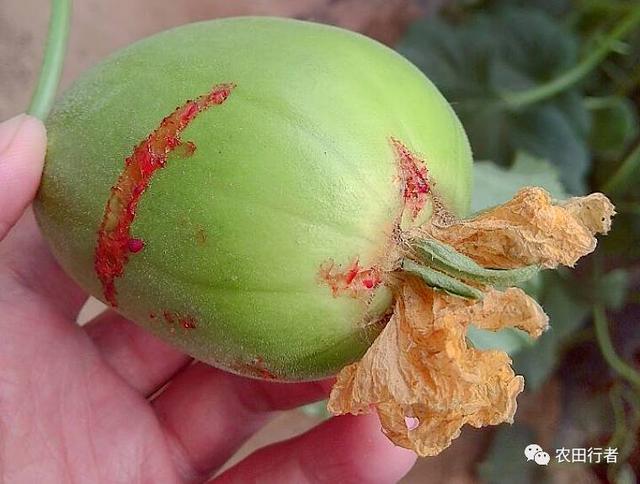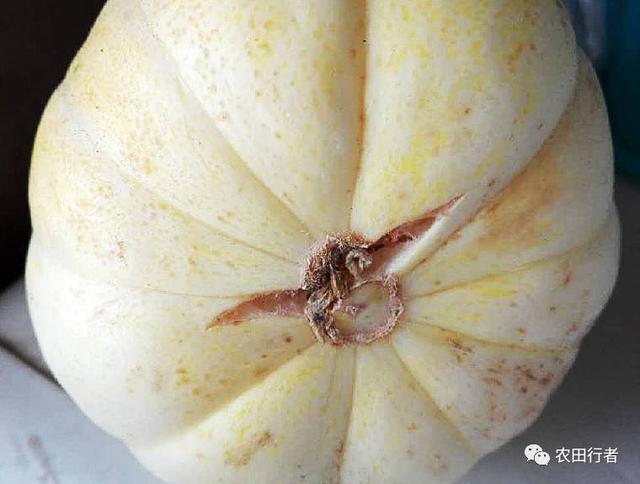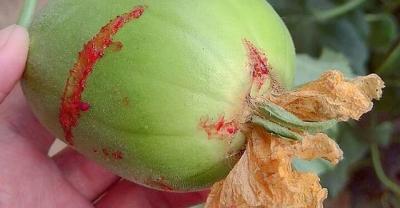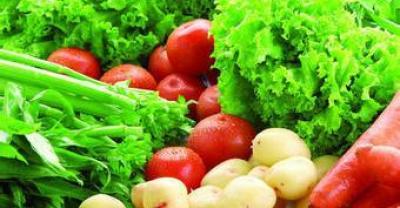What is the cause of melon and fruit cracking? What shall I do?

The direct cause of fruit cracking

The direct cause of fruit cracking is that the growth rate of the pericarp tissue near the surface of the fruit is inconsistent with that of the internal pulp, that is to say, the growth rate of the inner part of the fruit (pulp, pulp) is faster than that of the pericarp tissue, and the internal swelling pressure is too large. Sometimes the peel hardens prematurely due to the use of medicine and fertilizer or improper management, resulting in fruit cracking.
The cracking of melon and fruit occurs when the internal development of melon and fruit is intense after the continuous low temperature during the expansion of young fruit or the hardening of fruit surface in the later stage of fruit growth. Its occurrence is affected by the hardening degree and water content of the pericarp. When the sun shines strongly, the fruit epidermis will harden, and the cloudy and rainy days will be slower. If it is watered too much at this time, the plant will cause fruit cracking after absorbing water.

The pericarp hardens with the expansion and ripening of the fruit, reaching the harvest standard. In the late stage of fruit expansion or near maturity, the pericarp has hardened and there is little room for elongation. If the soil moisture increases because of watering or rain, the fruit will grow rapidly due to water absorption, resulting in violent fruit cracking. During the period of fruit expansion, the soil is dry, and fruit cracking is easy to occur when the soil and indoor air humidity is high in the later stage. In addition, if the environment is a little dry from the early stage of fruit expansion, so that the pericarp hardens prematurely, the fruit is more likely to crack.

Specific reasons for
1. Reasons for variety:
Varieties with too thin or brittle pericarp and varieties with small fruit are easy to crack. Round watermelon is easier to crack than oval watermelon, and oval watermelon is easier to crack than long oval watermelon. In the same variety, melon stalks with thick and short stems are more likely to crack than those with thinner and longer stems.
2. Improper use of hormones:
In the west of the protected area and the early stage of melon setting, because the indoor environmental conditions in the shed are difficult to meet the requirements of the western and melon flowering and fruiting period, the melon setting rate is low, so melon farmers often use hormone treatment to improve the melon setting rate. However, in the process of treatment, improper use of hormones is often caused by a variety of reasons, such as excessive hormone concentration, repeated treatment, high temperature time treatment and so on.

3. Soil reasons:
Excessive sand or excessive viscosity of melon soil is not conducive to improve the buffering capacity of soil. Soil desertification will leak fertilizer and water, excessive viscosity will lead to hardening and root rot and withering, too little organic matter and microorganisms, and low fertilizer use efficiency. Once the buffering capacity of the soil decreases, it will act directly on the melon plant.
4. Reasons for fertilization:
Heavy topdressing, light base fertilizer, heavy nitrogen fertilizer, light phosphorus and potassium fertilizer, heavy element fertilizer, light medium and trace element fertilizer, heavy root fertilizer, light extra-root fertilizer, heavy chemical element fertilizer, light organic fertilizer and soil miscellaneous fertilizer will cause the nutrient imbalance of melon soil. The lack of trace elements and organic matter in soil is also easy to form cracked melon.
5. Watering reasons:
During the fruiting period, the water supply of the fruit suddenly changed, such as the sudden pouring of water after a long drought or after a long drought, the volume of watermelon pulp increased too fast after water absorption, and the growth rate of melon peel could not keep up with the growth of melon pulp. Plots lacking calcium and magnesium are also prone to crack melons.
6. Temperature reason:

When it is cloudy and sunny for a long time, it will also cause cracking because the temperature rises too fast and too high. Greenhouse cultivation, low temperature at night or ventilation during the day into the cold air, the pericarp hardens, when irrigation is easy to cause cracking melon. In the later stage of melon fruit setting, the temperature in the greenhouse is lower than 15 ℃, the tuyere is opened too big or too fast at one time, and the temperature difference between day and night is too large in case of cold current and other natural disasters, which will make the western and melon fruit noodles easy to harden by cold wind and cause fruit cracking.
7. Physical factors:
Fruit cracking is also easy to occur when the fruit is damaged by collision, squeeze, insect pests, grass pests and so on.
8. Direct sunlight:
After the western and melon fruit noodles are exposed to the sun, it is not only easy to produce sunburn disease, but also the pericarp ages and hardens and shrinks, and the peel shrinks and produces concentric round tortoise cracks on the surface of muskmelon.
9. Harvest too late:
When muskmelon is near maturity, the pericarp begins to harden and stagnate. If it is not harvested in time at this time, because the root system is still constantly absorbing nutrients and water, the flesh of the melon continues to grow and expand, which will cause cracking when the swelling pressure is too large.
10. stagnant water in the field:
Due to the high viscosity of the soil or low-lying terrain, stagnant water will occur after watering or rainfall. If the soil is saturated with too much water, the root system absorbs and transports water and nutrients too quickly, which will cause the pulp to grow faster than the epidermis to crack melon.
Top Ten coping measures
1. Choose a good variety. 2. Appropriate use of hormones.
3. Improve soil quality. 4. Fertilizing scientifically.
5. Reasonable watering. 6. Control the temperature scientifically.
7. Strengthen the protective measures. 8. Avoid direct glare.
Pay attention to drainage and shelter from rain. 10. Harvest in time
Specific reasons
1. Select a good variety:
Select watermelon varieties with high pericarp toughness and not easy to crack melon. Summer cultivation of small fruit watermelon can choose black beauty and so on.
2. Appropriate use of hormones:
In the early stage of watermelon growth, the fruit surface was sprayed with 2000ml 4000 mg / L Bijiu and 200ml 500mg / L auxin, or with 15mg / L indoleacetic acid, 15mg / L gibberellin, 30mg / L naphthylacetic acid or 8mg / L cytokinin, and its mixture, once every 7 days after anthesis. Can prevent cracking melons. No matter which hormone or method is used to treat the melon fetus, the concentration of the solution should be prepared according to the drug performance and the indoor temperature index in the shed. When treating melon embryos with hormones, the treatment of melon embryos should be avoided as far as possible in the period of high temperature and low temperature, so as to prevent the concentration of liquid water from evaporating and causing cracking. After dipping flowers, if there is too much liquid attached to the fetus, use hand bombs to hit the vines to remove the excess liquid to reduce the chance of cracking melons. In addition, the treated melon plants should be marked with a marker to prevent cracking caused by repeated treatment of the melon fetus.
3. Improve soil quality:
Re-application of organic fertilizer and biological fertilizer to increase the content of organic matter and microorganisms in melon field. Plastic film mulching or ground hotline was used to increase soil temperature and promote root development to absorb water and nutrients in tillage layer. The viscous soil can be mixed with sand and gravel to improve soil permeability.
4. Scientific fertilization:
According to the law of fertilizer and water demand during muskmelon growth, balanced supply of fertilizer and water, do not blindly water and fertilize. When applying fertilizer, we should not only apply sufficient base fertilizer to meet the needs of muskmelon growth in the early stage, but also apply fertilizer in time in the later stage of melon growth to meet the fertilizer requirements of muskmelon growth in the later stage. Foliar spraying calcium fertilizer, increasing potassium fertilizer and fulvic acid fertilizer to improve pericarp toughness.
Spraying trace elements: supplement organic nutrients and calcium from leaves, enhance leaf photosynthesis, promote sugar formation and accumulation, enhance the tenacity of melon peel, effectively prevent melon cracking, increase sweetness, significantly increase yield and improve quality.
When there is insufficient fertilizer and water in the early stage of watermelon development, it should be supplemented step by step, foliar spraying should be carried out first, and then root topdressing and watering should be carried out. The application of phosphorus and potassium fertilizer can enhance the toughness of melon peel and reduce the cracking of melon.
5. Reasonable watering:
After planting, watering should be controlled and seedlings should be refined properly at low temperature to promote the development of roots to the deep soil, prevent seedlings from growing, and be conducive to the differentiation of strong female flowers. When the young melon sits to the size of the egg, irrigate it with small water in time to prevent the seedlings from overgrowing and promote the normal development of the young melon. After that, sufficient water is poured every 5-7 days until it stops one week before harvest.
On the basis of applying sufficient bottom fertilizer and bottom water, fertilize and water less as much as possible. When you need to be watered, you should irrigate a small amount of water, do not flood it, and avoid sudden drying and wetting of the soil, so as to avoid excessive differences in soil water content before and after watering. It can't be watered for 7 days before harvest. High temperature period should be watered in the early morning or evening when the ground temperature is low, do not water at noon when the temperature is higher, lest the root system absorb a large amount of water after watering, water supply is too fast, too much and melon crack occurs, and drainage should be done in time after rain. Spraying boron and calcium fertilizer on leaves can improve the toughness of melon and fruit epidermis.
"Cuttage needle interception". That is, before furrow irrigation or heavy rain, bamboo slices are cut into two bamboo needles with a diameter of 1x3, which are cut perpendicular to each other in order to control the flow of too much nutrients into the fruit and prevent excessive nutrition from cracking.
6. Scientific control of temperature:
In greenhouse production, heat preservation measures should be taken to keep the daily average temperature of the greenhouse above 15 ℃; when releasing air, pick a smaller tuyere first, and then gradually enlarge the tuyere with the increase of temperature; in case of a sudden cold current, heat preservation materials such as grass grass should be added in time to prevent the temperature from dropping suddenly.
7. Strengthen protective measures to ensure that cracked melons are reduced:
In the process of farming in the field, try not to touch or touch melon girls as much as possible to avoid human and mechanical injuries. Timely prevention and control of various diseases, pests and weeds to reduce the probability of cracking melons.
8. Take measures to avoid direct glare:
Protect leaves and fruits: pay attention to protect the leaves near the fruit and use them to block the sun for the melon fruit to avoid the aging and cracking of the peel caused by sunlight; when the fruit is exposed in the sun, newspaper bags can be used to protect the sun from direct sunlight. Shading can also prevent green spots on the fruit surface and keep the fruit beautiful, which is especially important when cultivated in summer.
9. pay attention to drainage and shelter from rain:
There are many Rain Water in summer, in order to prevent Rain Water from entering the melon field or the rainstorm impacting the open field, it is best to cover the whole period and protect from the rain. The greenhouse can be used for planting, and the open-field watermelon can be covered with an anti-insect net on the arch shed to ease the erosion of the rainstorm. Plastic film mulching and straw mulching were used to prevent the drastic change of soil moisture.
10. Harvest in time:
Melons should be harvested at noon in sunny days or in the afternoon when the water content is less. When harvesting melons in the morning or evening, melons are prone to crack in the process of harvesting and transporting melons because they contain more water.
- Prev

Tips for disinfecting melons and fruits
(1) scalding bubbles with boiling water. Wash the fruits (water chestnuts, apples, pears, plums, etc.) that are ready to be eaten raw and soak them in boiling water for about half a minute.
- Next

Three kinds of melons and fruits suitable for people with diabetes
The water content in melons and vegetables is very sufficient. According to the data, the water content in general melons and vegetables is more than 90%. Melon vegetables protect blood vessels.
Related
- Moge, come on! The staff of the peasant association in the producing area of cantaloupe were frightened when the crowd gathered.
- Causes and Solutions of low Fruit setting rate of Apple
- Symptoms and control measures of passion fruit virus disease
- Fruit growing lesson: how do apple orchards keep high yields?
- Can you build orchards in the mountains? What are the pros and cons?
- How to manage the coloring period of Crisson grape?
- This paper introduces the processing technology of two kinds of fig products.
- How much is a month for retired teachers in rural areas by 2020?
- How can strawberry planting increase sugar content? We should pay attention to management in many aspects.
- What are the cultivation techniques on how to improve the yield of golden fruit?

